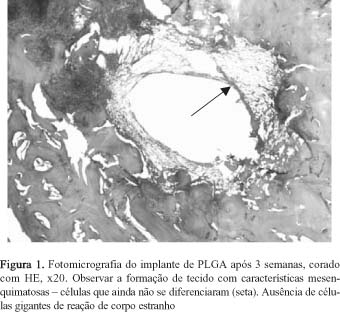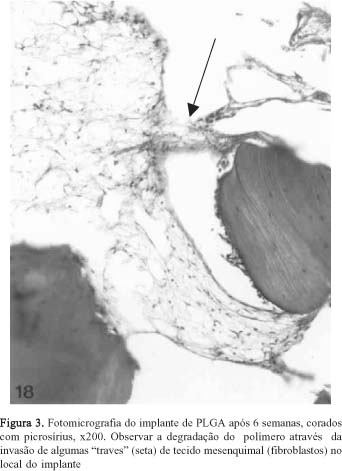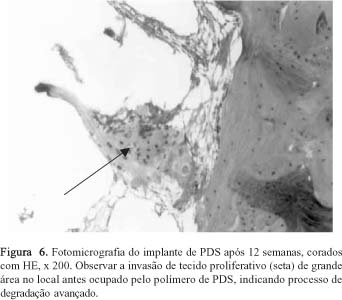Bioresorbable devices are alternatives for internal fixation. During the treatment, those devices maintain the fixation, degrade gradually and eliminate the need for a remove surgery, decreasing the treatment cost when compared with metallic devices. The aim of this work was to study the interaction polymer/tissue interaction using pins of PLGA and PDS implanted in New Zealand rabbits. The animals were separated in 3 groups which were sacrificed after 3, 6 and 12 weeks after implantation, and the obtained material was submitted to histological analysis. Histological analysis with PLGA implants showed after 3 weeks, the growth of a tissue with mesenchimal characteristics, after 3 weeks, with formation of mature bone aready after 12 weeks. PDS implants after 3 weeks showed a bigger invasion of mesenchimal tissue compared to PLGA and after 12 weeks an advanced degradation occurred, with proliferation of mesenchimal and bone tissue formation. It is concluded that the results are highly positive, with the relevant absence of cells responsible for inflammatory response. Analysis showed that the copolymer PLGA has better ostoinductive properties than PDS, showing biocompatibility acceptable for orthopedics application.
Poly(lactic-co-glycolic acid); poly(p-dioxanone); osteoinduction






